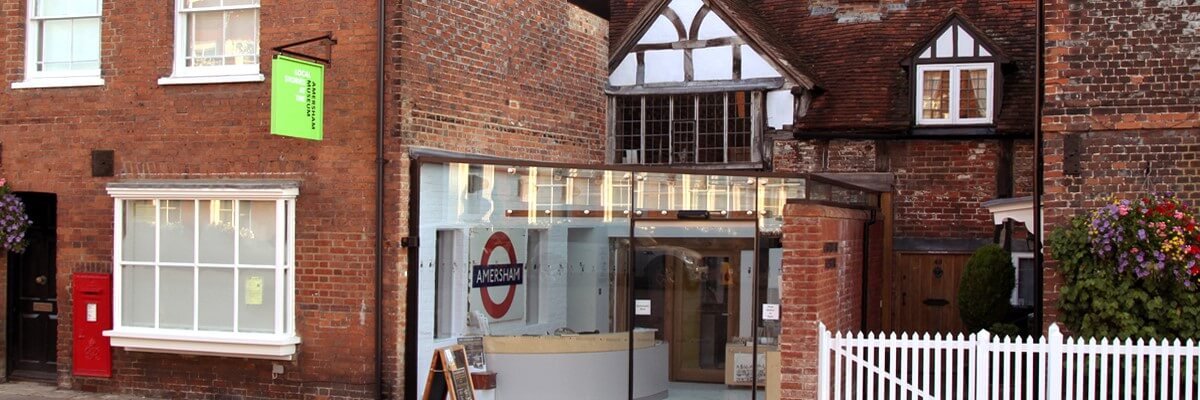GRAFFITI IN OLD AMERSHAM
This article was written by Peter Borrows for the Amersham Society newsletter and he supplied most of the photos
We tend to think that graffiti are rather disfiguring although if the graffito artist is Banksy it suddenly becomes rather valuable. But some graffiti are intrinsically interesting, the older the better. At Maes Howe, on Orkney, there is a Neolithic tomb dating from about 2700 BCE but, in the 12th century CE, Viking raiders, perhaps hoping to find gold artefacts, broke in and left thirty or so inscriptions in two different runic alphabets, although admittedly most of them were of the “Ingigerth is the most beautiful of all women” and “Ofram the son of Sigurd carved these runes” variety. At the Tower of London, many prisoners had plenty of time to carve their names or more elaborate inscriptions, including Ambrose Rookwood, hung, drawn and quartered in 1607 as one of the gunpowder plotters. But does Amersham have its own historic graffiti?
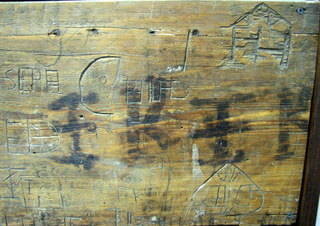 The Amersham History web site, identifies just one instance, in the building on the north side of Market Square, originally the Fraternity of St Katherine but later used by Dr Challenor’s Grammar School. The picture shows graffiti believed to date from the 17th century carved on a desk. One of the (just about) legible names is Child, a prominent Amersham family, for example brewers and owners of the Crown Inn in the 17th century.
The Amersham History web site, identifies just one instance, in the building on the north side of Market Square, originally the Fraternity of St Katherine but later used by Dr Challenor’s Grammar School. The picture shows graffiti believed to date from the 17th century carved on a desk. One of the (just about) legible names is Child, a prominent Amersham family, for example brewers and owners of the Crown Inn in the 17th century.
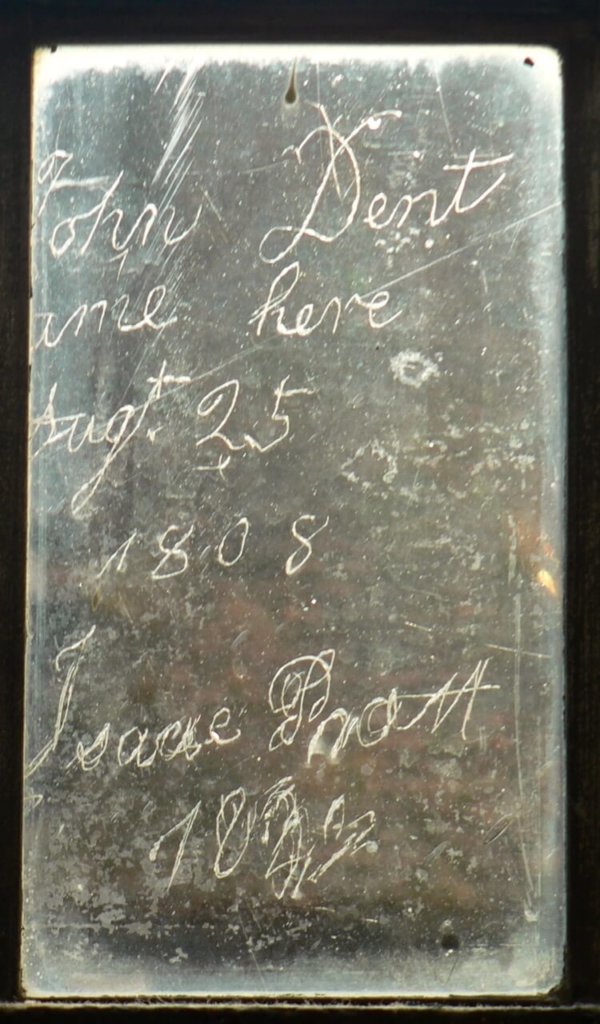 Recently I noticed graffiti scratched into one of the window panes in the Market Hall. Nobody I have spoken to was aware it was there and, so far, I have found no record of it. To see it, you need to go up into the hall and look at the middle window on the south (ie, road) side. It’s one of the panes towards the right-hand side and a little above head height. Clearly there are two authors, John Dent’s rather fine handwriting being copied less successfully by Isaac Pratt. But who were they? It is very difficult to scratch curved lines on glass with a steel point, so the neat lettering of John Dent might suggest a diamond could have been used whereas the messier effort by Isaac Pratt might well have been made with a steel point. I have not, so far, found any record of a John Dent or indeed any Dent, living in Amersham, but then it does say he “came here” so perhaps he was just visiting. 25th August 1808 was a Thursday, so it was not market day. Does anyone have any ideas?
Recently I noticed graffiti scratched into one of the window panes in the Market Hall. Nobody I have spoken to was aware it was there and, so far, I have found no record of it. To see it, you need to go up into the hall and look at the middle window on the south (ie, road) side. It’s one of the panes towards the right-hand side and a little above head height. Clearly there are two authors, John Dent’s rather fine handwriting being copied less successfully by Isaac Pratt. But who were they? It is very difficult to scratch curved lines on glass with a steel point, so the neat lettering of John Dent might suggest a diamond could have been used whereas the messier effort by Isaac Pratt might well have been made with a steel point. I have not, so far, found any record of a John Dent or indeed any Dent, living in Amersham, but then it does say he “came here” so perhaps he was just visiting. 25th August 1808 was a Thursday, so it was not market day. Does anyone have any ideas?
The date of Isaac Pratt’s contribution is indistinct – perhaps in the 1840s? There are a number of records of the Pratt family in the area over the years. According to the Amersham History web site, Woodside Farm, on the site of the Leisure Centre in Amersham-on-the-Hill, was earlier recorded as Pratts Farm after the yeoman farmer, Timothy Pratt, who lived there with his family at the end of the 17th century. By the 19th century, we can use census records to find three Isaac Pratts living in the area. In 1851, there is an Isaac Pratt, born in 1803, a blacksmith, living at Chandler’s Cross, Chalfont St Giles and his son, also Isaac Pratt born in 1837. The third Isaac Pratt was born in 1811 and in 1871 is a gamekeeper living by the Turnpike Tollhouse, at Whielden Lane. If the illegible date is in the late 1840s then the most likely seems to be the blacksmith’s teenage son.
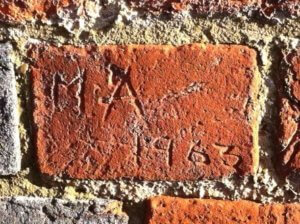 Much of the old town is constructed of, or faced with, a rather soft brick. This makes it easy to carve initials into the wall and walking around the town you can often spot these. Is it sexist to suggest that these tend to be carved by teenage boys? One cluster of examples can be seen on the wall of St Mary’s Cemetery (not the church yard) on the corner where the path turns up towards Rectory Wood. The most prominent is MA 1963. If a teenager in 1963 he (probably not she) could still be alive, perhaps living in Amersham – even a member of this Society. Any confessions?
Much of the old town is constructed of, or faced with, a rather soft brick. This makes it easy to carve initials into the wall and walking around the town you can often spot these. Is it sexist to suggest that these tend to be carved by teenage boys? One cluster of examples can be seen on the wall of St Mary’s Cemetery (not the church yard) on the corner where the path turns up towards Rectory Wood. The most prominent is MA 1963. If a teenager in 1963 he (probably not she) could still be alive, perhaps living in Amersham – even a member of this Society. Any confessions?
The former National School (now the King’s Chapel) was set up in 1842 by non-conformist churches through the British Schools Committee, and attached to what was then a Baptist chapel. The graffiti-covered wall is a terrible(?) warning of what happens if you teach children to read and write!
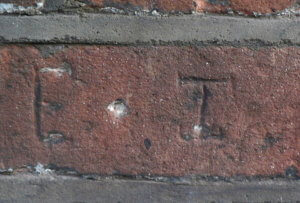 Another example can be seen at Troye Cottage (32 Whielden Street), on the third brick (40 cm) to the left of the ground floor window, on the fourth brick (25 cm) above the window sill. (In summer, they may be obscured by plant growth). These are better carved letters than the cemetery example, with serifs, not rapidly incised with a rusty nail. But what is the 2nd letter: is it I, T or L and who carved them? It seems reasonable to assume it was probably carved by a resident in the house. In researching the history of Troye Cottage, we compiled a list of the known residents between its construction in 1702/3 and the present day. From the 1841 census onwards, this includes children. None have a surname beginning with I or T. Could it perhaps be an L, rather than an I or T? In that case, EL could be one of the Line family. We know that they were not living at Troye Cottage at the time of the 1891 census (5th April) but were there ten years later, when Ernest H Line was 23. If they moved in soon after the 1891 census he could have spent almost all his teenage years in the house. There is a detailed history of the Line family on this web site, although not the Whielden Street branch.
Another example can be seen at Troye Cottage (32 Whielden Street), on the third brick (40 cm) to the left of the ground floor window, on the fourth brick (25 cm) above the window sill. (In summer, they may be obscured by plant growth). These are better carved letters than the cemetery example, with serifs, not rapidly incised with a rusty nail. But what is the 2nd letter: is it I, T or L and who carved them? It seems reasonable to assume it was probably carved by a resident in the house. In researching the history of Troye Cottage, we compiled a list of the known residents between its construction in 1702/3 and the present day. From the 1841 census onwards, this includes children. None have a surname beginning with I or T. Could it perhaps be an L, rather than an I or T? In that case, EL could be one of the Line family. We know that they were not living at Troye Cottage at the time of the 1891 census (5th April) but were there ten years later, when Ernest H Line was 23. If they moved in soon after the 1891 census he could have spent almost all his teenage years in the house. There is a detailed history of the Line family on this web site, although not the Whielden Street branch.
Are there any more examples of graffiti in Old Amersham and can anyone shed any further light on who the perpetrators were?
More graffiti
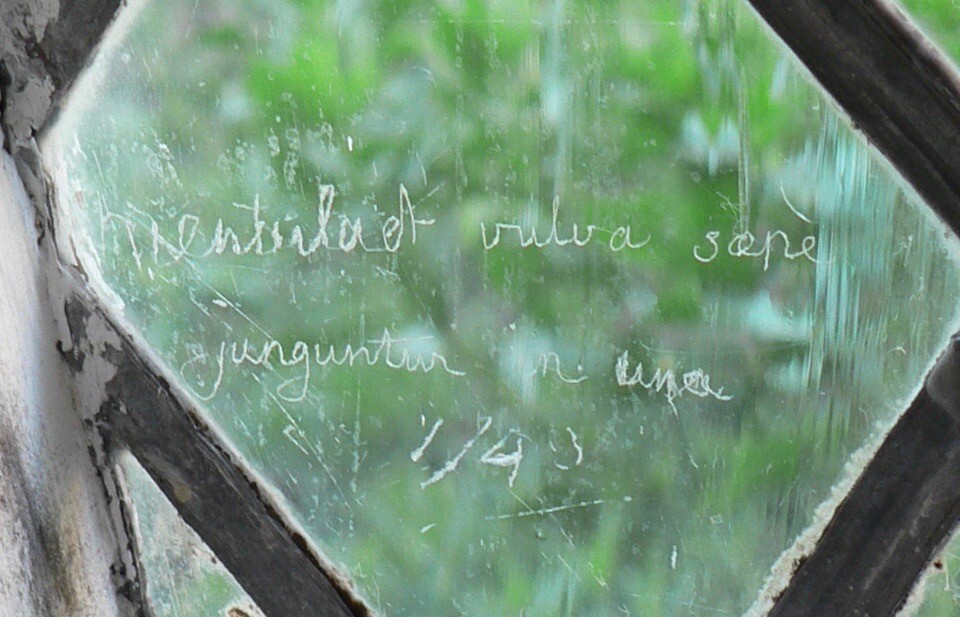
Following publication of the article above, a resident of the Old Town approached Peter to say that one of her windows had an inscription – in Latin. The inscription appears to read: Mentula et vulva saepe junguntur in una 1748.
 When Peter went to have a look at it he realised that there was a second, much cruder, inscription on the diamond pane immediately below the Latin one. It also became apparent that although the second inscription had been written from the inside of the building, the Latin inscription was on the outside (although of course the pane may have been reversed over the last 270 years).
When Peter went to have a look at it he realised that there was a second, much cruder, inscription on the diamond pane immediately below the Latin one. It also became apparent that although the second inscription had been written from the inside of the building, the Latin inscription was on the outside (although of course the pane may have been reversed over the last 270 years).
Because the inscription is on private land we are not specifying its exact location and because it is rather vulgar we are not publishing a translation – that may, of course, provide an incentive for your teenage children or grandchildren.
The other inscription is rather less intriguing. Although undated, the writing is in an obviously much more modern style. Census and similar records show a number of people with the surname SLADE in the area in the 20th century but we have so far not identified a W B Slade.

